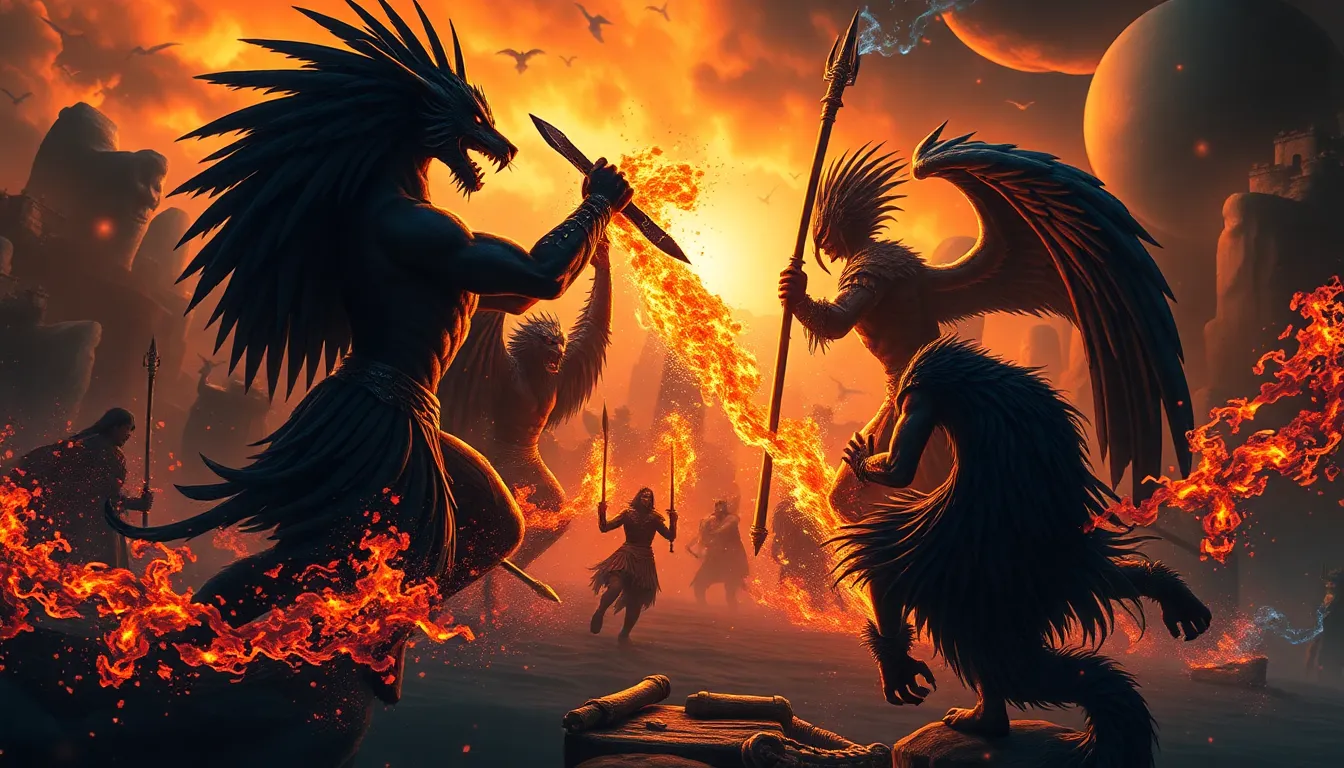The Legendary Labors: Myths of Heroes Who Conquered Mountains
I. Introduction
Mountains have long been revered as formidable and majestic elements of nature. Across various cultures, they have inspired countless myths and stories of heroism, often serving as both literal and metaphorical obstacles that heroes must overcome. These mountain myths not only speak to the physical challenges faced by characters but also reflect deeper themes of resilience, bravery, and the human spirit’s triumph over adversity.
This article aims to explore the legendary labors associated with mountains in different mythologies, examining the significance of these narratives in shaping cultural values and understanding the heroic journey.
II. The Concept of the Hero’s Journey
The hero’s journey is a narrative framework that outlines the adventure and transformation of a protagonist as they embark on a quest. This concept, popularized by Joseph Campbell, identifies several stages that heroes typically encounter:
- Call to Adventure
- Crossing the Threshold
- The Road of Trials
- Transformation
- Return with the Elixir
In mountain myths, the journey often involves common themes and archetypes, including:
- Overcoming physical challenges
- Encounters with supernatural beings
- Testing of moral character
Mountains serve as significant obstacles in these narratives, symbolizing the struggles and hardships that must be faced and conquered. They represent not only physical barriers but also internal struggles that heroes must navigate in their personal growth.
III. Greek Mythology: The Labors of Hercules
Hercules, one of the most iconic figures in Greek mythology, is renowned for his extraordinary strength and his Twelve Labors, a series of tasks he was required to complete as penance. Many of these labors involve mountainous terrains, highlighting the connection between heroism and the challenges posed by nature.
Two notable labors that illustrate this connection are:
1. The Nemean Lion and the Ceryneian Hind
The first labor required Hercules to slay the Nemean Lion, a beast with impenetrable skin. This task took him to the rugged mountains of Nemea, where he had to use his wits and strength to capture the lion. The challenge symbolized the struggle against seemingly unbeatable foes.
The second labor involved capturing the Ceryneian Hind, a sacred creature that lived in the mountains and possessed incredible speed. Hercules had to pursue this hind for an entire year, representing the endurance and dedication required to achieve one’s goals.
2. The Erymanthian Boar and the Stymphalian Birds
Another labor saw Hercules tasked with capturing the Erymanthian Boar, which resided on Mount Erymanthos. This boar was known for its ferocity, and capturing it required not only physical strength but also strategic thinking.
Additionally, Hercules faced the Stymphalian Birds, which nested in the mountains and terrorized the local populace. Using his ingenuity, he devised a plan to drive them away, showcasing the importance of resourcefulness in heroism.
Each of these labors symbolizes the concept of overcoming challenges, with mountains serving as the backdrop for Hercules’s journey of self-discovery and resilience.
IV. Norse Legends: Thor and the Mountains of Jotunheim
In Norse mythology, Thor, the god of thunder, is frequently portrayed battling giants in the mountainous realm of Jotunheim. These stories emphasize the conflict between the gods and the forces of chaos represented by the giants.
Thor’s adventures often take him to treacherous mountain peaks, where he must use his strength and courage to confront these formidable foes. One key story involves Thor’s journey to Jotunheim to retrieve his stolen hammer, Mjölnir, a quest that highlights not only his physical prowess but also his determination to restore order.
The mountains in these myths symbolize both the challenges that Thor faces and the wild, untamed nature of the giants. This relationship between gods and mountains showcases the duality of nature as both a source of danger and a setting for heroic feats.
V. Hindu Epics: The Churning of the Ocean and Mount Mandara
Mount Mandara plays a crucial role in Hindu mythology, particularly in the epic tale of the Churning of the Ocean of Milk, as described in the Mahabharata. In this story, gods and demons cooperate to churn the ocean to obtain the nectar of immortality.
The mountain serves as the churning rod, illustrating the theme of collaboration and the blending of opposing forces. The labor of both gods and demons signifies the arduous effort needed to achieve a common goal.
Mount Mandara, in this context, represents not just a physical challenge but also the spiritual and moral dilemmas faced by the characters, showcasing the complex relationship between effort, reward, and the cosmos in Hindu cosmology.
VI. Native American Legends: The Sacred Mountains
Across Native American cultures, mountains are often regarded as sacred entities, imbued with spiritual significance. Various tribes tell stories of heroes like Coyote or the Great Spirit, who engage with these majestic landscapes.
For example, in many legends, Coyote is depicted as a trickster figure who navigates the mountainous terrains, overcoming challenges through cleverness and adaptability. The mountains serve as both a physical setting for these tales and a representation of the spiritual world.
The deep connection between mountains and indigenous cultures highlights the reverence for nature and the understanding of its role in the human experience, as mountains are seen as places of power, wisdom, and transformation.
VII. The Heroic Conquests in Asian Mythology
Asian mythologies also feature rich narratives involving mountains. In Chinese folklore, the Eight Immortals are celebrated for their adventures across various landscapes, including mountains. Each immortal represents different virtues and skills, and their journeys often include overcoming natural obstacles.
In Japanese Shinto beliefs, mountains are considered sacred, often personified as deities. The act of climbing mountains is seen as a spiritual journey, connecting the climber with the divine.
These stories emphasize the significance of mountains as places of challenge and enlightenment, reflecting the universal theme of seeking higher understanding through overcoming physical barriers.
VIII. The Evolution of Mountain Myths in Contemporary Culture
As society evolves, so do the interpretations and representations of mountain myths. Ancient tales continue to influence modern storytelling, appearing in literature, film, and art. Examples include:
- The depiction of heroic journeys in fantasy novels, such as J.R.R. Tolkien’s works, where characters face formidable landscapes.
- Films that portray mythical challenges, drawing from various cultural narratives about climbing mountains and facing fears.
The ongoing relevance of mountain challenges in today’s society reflects humanity’s enduring fascination with overcoming obstacles, whether physical, emotional, or spiritual.
IX. Lessons from Legendary Labors: Heroism and Resilience
Through the exploration of mountain myths, we learn valuable lessons about the nature of heroism. These stories teach us that:
- Challenges are integral to personal growth.
- Resilience and determination can lead to triumph.
- Collaboration with others can help overcome seemingly insurmountable obstacles.
Ultimately, the legendary labors associated with mountains inspire individuals to embrace their own challenges, recognizing that the journey itself is often as important as the destination.




